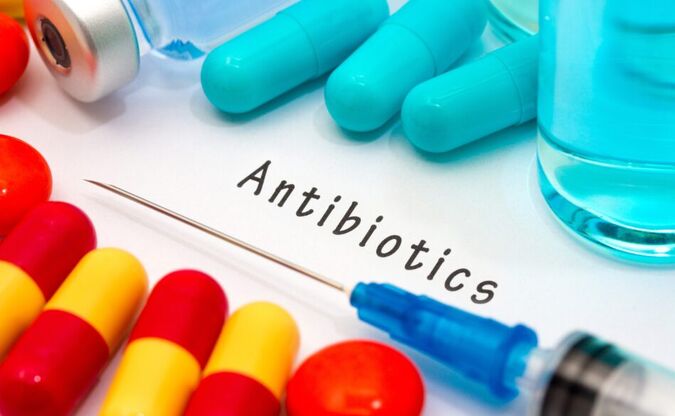Sexually transmitted diseases (or STDs for short) such as chlamydia and herpes are some of the commonly known, but which STDs are most frequently diagnosed in the UK? And which cities are affected the most by diseases such as these? To discover all of the most up-to-date statistics on STDs in 2021, we conducted an analysis of diagnoses made in the UK, online search data and existing research on the topic of STDs and STIs. We also assessed the impact of the COVID19 pandemic on the ways in which the UK has been affected by STDs over the last few years.
STD Statistics - Key Findings
- People in Manchester search for STD symptoms more than any other UK city, with over 14 searches being conducted for every 100 people in the population each year.
- Overall there was a 32% decrease in STD diagnoses in England from 2019 to 2020.
- Chlamydia is the most diagnosed STD in England, with over 161,000 diagnoses in 2020 alone.
- Despite an estimated 0.15% of the UK population living with HIV*, the condition’s symptoms are the second most commonly searched in the whole UK, with over 48,000 searches taking place every month.
- People in the UK most commonly look up STDs, as well as STD screening, in the early hours of the morning.
*This figure was calculated using the estimated number of those living with HIV in 2019 from the National AIDs Trust website and the current UK population from World Population Review.
What is an STD?
STD stands for sexually transmitted disease. STDs are similar in many ways to STIs, which stands for sexually transmitted infections. Not all diseases begin with infections, but many do. STDs first begin as STIs, and may progress into a disease over time. Many people, including doctors and other medical professionals, may use the term STI rather than STD because of stigma and bad connotations surrounding STDS, so the terms are largely treated as interchangeable.
What are the Most Common STDs in England?
According to official statistics from Public Health England, the most common STDs in England are:
- Chlamydia, with 161,672 diagnoses in 2020
- Gonorrhoea, with 57,084 diagnoses in 2020
- Genital warts, with 27,473 diagnoses in 2020
- Herpes (anogenital herpes), with 20,530 diagnoses in 2020
To find out how the UK is affected by STDs, we used Public Health England’s data combined with that from the NHS website to find the most common STDs in the UK*. We then used the Keyword Finder tool to see how many people in the UK search for them online.
- The search term most commonly searched is ‘chlamydia symptoms’, with an average of 55,200 searches per month in the UK.
- The second most common search term searched for in the UK is ‘HIV symptoms’, with an average of 48,700 searches per month.
- ‘Herpes symptoms’ is the third most common search term with 28,600 average monthly searches.
- ‘Syphilis symptoms’ is the fourth most common search term, with an average of 26,400 searches each month, or around 36 times every hour.
- Searches for ‘gonorrhea symptoms’ show that, despite being the second most diagnosed STD in the UK, it is only looked up 25,100 times each month on average.
*The only condition researched which was not on either of those lists/data sets was HIV, which is not a hugely common condition but is extremely well-known, making it likely to have a large number of monthly searches. Conditions such as scabies and hepatitis b may be transmitted in ways other than sexual intercourse, such as prolonged skin-to-skin contact, sharing items such as clothes/bedding/towels, or sharing tothbrushes/nail clippers/razors and coming. However they are still classed as STDs, and are still included on the NHS’s list of common STD’s/STI’s in the UK, therefore they have been included as part of this research.
When Do We Search For STDs Most Commonly?
To gain a more in depth understanding of how people in the UK are affected by STDs and the times of day they are most likely to play on peoples’ minds, we conducted an analysis of online searches for some of the most common STDs in the UK, using Google Trends to see when in the last seven days they were searched the most and if there was a recurring pattern. Since chlamydia, genital warts, herpes, syphilis and gonorrhea are five of the most commonly diagnosed and known STDs in England*, as well as some of the most commonly searched STDs in the UK**, we decided to analyse the search terms with ‘symptoms’ included, with the idea that those searching for these terms would be less likely to be searching for research purposes and more likely to have identified a symptom of an STD on themself or someone else. UK Google searches showing trends for search terms 'Chlamydia symptoms’ (blue), ‘genital warts symptoms’ (red), ‘herpes symptoms’ (yellow), ‘syphilis symptoms’ (green) and ‘gonorrhea symptoms’ (purple) from 30/11/21 to 07/12/21. Source: Google Trends As you can see from the graph:
- Search volumes for all terms are lowest in the day, then slowly rise in the evenings and go up sharply in the early hours of the morning between 12am and 4am, each morning without fail.
- ‘Chlamydia symptoms’ has the highest levels of interest, with ‘herpes symptoms’ spiking at similar rates.
- Searches for ‘genital warts symptoms’, ‘syphilis symptoms’ and ‘gonorrhea symptoms’ have lower interest, but with each term still seeing smaller spikes at the same/similar times as ‘herpes symptoms’ and ‘chlamydia symptoms’.
These results could mean several things—whether it’s that people are kept awake at night worrying about their sexual health, they decide to do some research after a few drinks, or whether symptoms are most commonly noticed for the first time while we’re in bed, what matters is that we have a frequent pattern of searching for sexual health information and/or advice, which is often a good thing! We also looked up the search term ‘std screening’ on Google Trends over the last 7 days, to see if there were any similarities between this and the searches for the STD search terms. UK Google searches showing trends for search term ‘std screening’ from 30/11/21 to 07/12/21. Source: Google Trends
- Although not quite as distinctive as the first graph, there are spikes for most days, and the largest spikes are also late at night or in the early hours of the morning.
- The largest spike in interest is on the 1st December at 3am, while the second largest spike in interest is on 6th December at 2am.
- The smaller bumps in interest tend to be during daytime hours, but the most popular times for searching for STD screening seems to be between 12am and around 3am.
*Syphilis was actually not one of the most diagnosed STDs in England according to data from Public Health England, however it was very commonly searched, and it was not uncommon enough to be included in the ‘other new STI diagnoses’ section of Public Health England’s data. **HIV was not included in this study since it is not commonly diagnosed.
Which UK Cities are Most Affected by STDs?
After finding out from Public Health England that chlamydia, gonorrhoea, herpes, and genital warts are the most commonly diagnosed STDs in England*, we decided to use Keyword Finding to find out which STDs are most commonly searched in the UK’s 25 most populous cities. This is what we found: As you can see from the graph:
- The city with the highest number of searches is Manchester, with over 14 yearly searches per 100 people and a total of 57,600 yearly searches overall.
- In second place is Leeds, with around 11 yearly searches per 100 people.
- Birmingham and Glasgow have similar figures, with around 9 searches per 100 people each year for STD symptoms.
- Despite having the largest population in the UK, London is only seventh on the list, with an average of 7 yearly searches per 100 people.
*Data from gov.uk shows figures of new STI diagnoses in England in 2019 and 2020, with chlamydia, gonorrhoea, genital warts and herpes having the highest number of new diagnoses in 2020 out of the figures collected by Public Health England. Methodology: To obtain this data we looked at monthly searches in 25 of the most populous UK cities for different STD search terms such as ‘chlamydia symptoms’, ‘gonorrhea symptoms’ and ‘genital warts symptoms’. Then multiplied the monthly averages by 12 to find the average yearly searches, and divided these figures by city population numbers sourced from World Population Review in order to find the yearly average searches per person. We then multiplied these figures by 100 to find the yearly average searches per 100 people in each city.
What Are Our Most Common Symptoms?
We did some research on the most common STD symptoms*, and used Keyword Finder to look at how many monthly searches on average each symptom gets in the UK. This is what we found:
| Search term | Avg. Search Volume per Month |
| Warts on genitals | 116,000 |
| Discharge from vagina | 18,000 |
| Itchy anus | 12,600 |
| Warts on anus | 8700 |
| Lumps on anus | 5600 |
| Burning when peeing | 4500 |
| Discharge from penis | 3100 |
| Discharge from anus | 2300 |
| Pain when peeing | 1700 |
| Warts in mouth | 1200 |
| Itchy genitals | 1200 |
| Rash on genitals | 720 |
| Lumps on genitals | 300 |
As we can see from the table:
- ‘Warts on genitals’ is the most commonly searched term, with 116,000 searches on average every month in the UK.
- ‘Discharge from vagina’ is the second most searched term in the UK**, with 18,000 searches each month on average.
- ‘Itchy anus, ‘warts on anus’ and ‘lumps on anus’ are the third, fourth and fifth most common searches, with averages of 12,600, 8,700 and 5,600 monthly searches respectively. An itchy anus may be due to a number of conditions, including certain skin conditions, thyroid disease and diabetes. Warts on the anus, however, may be indicative of human papilloma virus (HPV), while lumps may be indicative of hemorrhoids.
*This is not an exhaustive list of STD symptoms, but it is a list of symptoms that have been observed to be frequent across different common STDs. **While ‘unusual vaginal discharge’ is a common symptom of STDs, vaginal discharge is a common and normal occurrence that many, especially young women, may be unaware of, so it is difficult to say what percentage of these searches would have been for abnormal discharge
How are Different Genders Affected by STDs?
Looking at data published by Public Health England, we can see that:
- STDs such as chlamydia, herpes and pelvic inflammatory disease (PID) are more commonly diagnosed in women.
- However, others such as gonorrhoea, mycoplasma genitalium, genital warts, syphilis and non-specific genital infections* are more commonly seen in men.
*’non-specific genital infections’ refer to when a urethral sample suggests inflammation or infection, but urine tests for chlamydia and gonorrhoea are negative. As you can see from the graph:
- As expected, chlamydia is the most commonly diagnosed STD in both sexes, with considerably more diagnoses in women (88,674) than in men (70,581).
- Men are significantly more commonly diagnosed with gonorrhoea than women, with 40,743 diagnoses in 2020, whereas women only had 15,509.
- Men have a slightly higher diagnosis rate than women when it comes to genital warts, with around 5,000 more diagnoses than women.
- But women have a higher rate of diagnoses with herpes, with over 6,000 more diagnoses than men.
Did the COVID19 Pandemic Change How We Are Affected by STDs?
It comes as no surprise that a global pandemic would affect the numbers of STD diagnoses across the UK, given lockdowns, less sexual partners, and being unable to get tested or book medical appointments. According to research recorded by Public Health England:
- Between March and May of 2020 there was a reduction in consultations undertaken by sexual health services and specialised HIV services.
- In this time period there was also a decrease in vaccination of gay, bisexual and other men who have sex with men (MSM) against HPV, hepatitis B, and hepatitis A.
- Overall numbers of consultations, vaccinations, tests, diagnoses, and treatment initiations in the summer of 2020 were considerably lower than in corresponding months in 2019.
- Reduced demand for sexual health services during 2020 may have been influenced by compliance with social distancing measures as well as changes in risk perception and behaviour.
Looking at the data from Public Health England, we can see that:
- Diagnoses for every STD recorded fell in 2020, for some as much as 47%. This is most likely due to the COVID19 pandemic, meaning less people went out and got tested for STDs, so less cases will have been recorded.
- Syphilis had the smallest drop in diagnoses with a 14% decrease in 2020. Syphilis is also the second-least diagnosed STD of the ones recorded*.
- Mycoplasma genitalium is the overall least diagnosed, with a 21% drop in 2020.
- Genital warts saw the largest difference in diagnosis between 2019 and 2020 with a 46% drop in diagnoses.
*This is not counting the STDs that are unspecified by name, including the ones included in the category of ‘non-specific genital infection’ and ‘other new STI diagnoses’. If you are concerned about STDs and would like advice, or have queries regarding our free online doctor service, please contact us via the contact form on our website, call 0121 772 3873 or email [email protected].

Focus on Your Health This New Year

How can Pharmacy Direct GB help at...

How to Keep Motivated in Winter

National Stress Awareness Week – Reducing...

Infection Prevention Week — Using Antibiotics...


